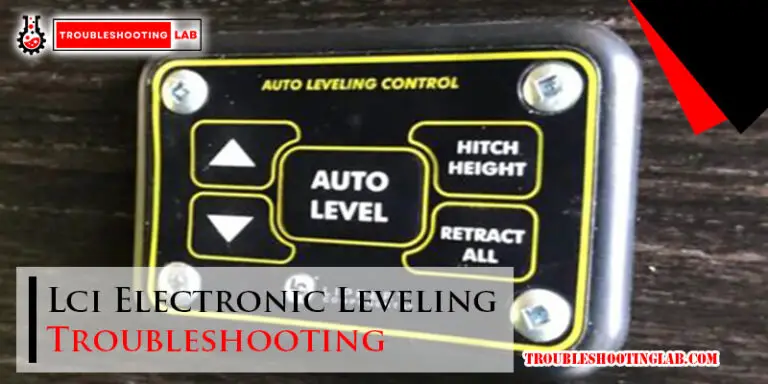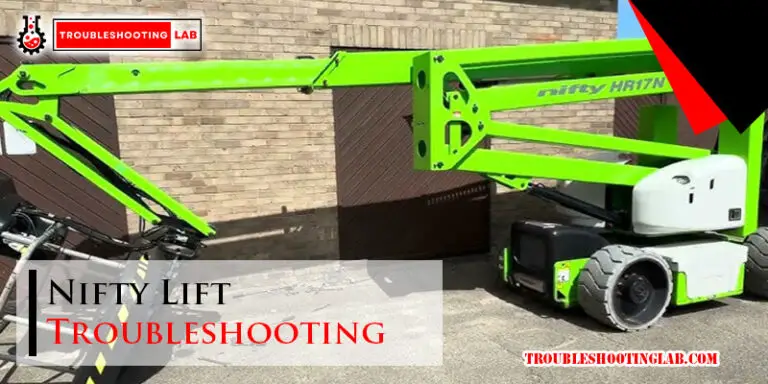Bernina Troubleshooting Guide: Fix Sewing Machine Issues
If you are experiencing issues with your Bernina sewing machine, try these troubleshooting tips to fix the problem. From buzzing noises to screen freezes, and thread breakage to poor stitch quality, this guide will help you identify and resolve common issues.
Whether it’s checking the needle and thread or ensuring proper connections, this troubleshooting guide will help you get your Bernina sewing machine back up and running smoothly. Don’t let these problems hinder your sewing experience; follow this guide to troubleshoot and resolve any issues you may be facing with your Bernina machine.
Buzzing Noise: What Causes It And How To Resolve It
Is your Bernina sewing machine emitting a buzzing noise that is becoming quite an annoyance? Don’t worry, we’ve got you covered! In this guide, we’ll explore the possible causes of buzzing noises and provide you with steps to troubleshoot and fix the issue. We’ll also share some tips for preventing buzzing noise in the future, so you can enjoy a smooth and quiet sewing experience. Let’s dive in!
Possible Causes Of Buzzing Noise
If you’re hearing a buzzing noise from your Bernina sewing machine, there could be several reasons behind it. Here are some possible causes:
- Loose screws or parts: Over time, the vibrations and movements during sewing can cause screws or other parts to come loose. This can result in a buzzing sound.
- Dirt or debris: Dust, lint, or other debris can accumulate in the machine, causing interference with the moving parts and leading to buzzing noise.
- Incorrect thread tension: Improperly adjusted thread tension can cause the machine to vibrate and produce a buzzing sound.
- Worn-out or damaged parts: If certain components of the machine, such as gears or belts, are worn out or damaged, it can cause a buzzing noise during operation.
Steps To Troubleshoot And Fix Buzzing Noise Issue
Now that we understand the possible causes, let’s move on to troubleshooting and fixing the buzzing noise issue in your Bernina sewing machine:
- Step 1: Check for loose screws or parts. Inspect your machine for any loose screws or parts. If you find any, tighten them using a screwdriver or consult the user manual for specific instructions.
- Step 2: Clean the machine. Remove the needle plate and bobbin case to access the internal parts of the machine. Use a small brush or vacuum cleaner to gently remove any dust or debris. Be careful not to dislodge any delicate parts.
- Step 3: Adjust thread tension: Check the thread tension and make adjustments if necessary. Refer to the user manual for guidance on adjusting the tension properly.
- Step 4: Inspect for worn-out or damaged parts. Examine the gears, belts, and other moving parts for signs of wear or damage. If you notice any issues, it may be necessary to replace the worn-out parts. Consult a professional technician or contact Bernina customer support for assistance.
Tips For Preventing Buzzing Noise In The Future
Prevention is always better than cure. Here are some tips to help you prevent buzzing noise in your Bernina sewing machine:
- Regular maintenance: Schedule regular maintenance sessions for your machine. This will ensure that all the parts are in good condition, minimizing the chances of buzzing noise.
- Keep the machine clean: Clean your machine after each use and remove any lint or debris. This will prevent the buildup of dirt and minimize the risk of buzzing noise.
- Use high-quality thread: Opt for high-quality thread that is suitable for your fabric and machine. Poor-quality thread can cause tension issues, leading to buzzing noise.
- Follow the user manual. Always refer to the user manual for proper maintenance and usage instructions. Following the manufacturer’s guidelines will help keep your machine running smoothly.
By following these steps and implementing preventive measures, you can ensure that your Bernina sewing machine operates quietly and efficiently, allowing you to focus on your sewing projects without any distractions. Happy sewing!
Oiling: Importance And Steps To Properly Oil Your Bernina Sewing Machine
Oiling your Bernina sewing machine is a crucial part of its maintenance and care. Proper oiling ensures that all the moving parts remain lubricated, reducing friction and wear and tear. This not only prolongs the life of your machine but also ensures smooth and accurate sewing results. In this section, we will discuss why oiling is crucial, provide a step-by-step guide for oiling your Bernina machine, and recommend the frequency of oiling and maintenance.
Why Oiling Is Crucial For A Sewing Machine
Oiling is essential for maintaining the optimal performance of your Bernina sewing machine. Here are some reasons why oiling is crucial:
- Reduces friction: Oiling your machine helps reduce friction between the moving parts, such as the needle, presser foot, and bobbin case. This allows for smoother and quieter operation, preventing unnecessary strain on the machine.
- Prevents rust and corrosion: Sewing machines are susceptible to rust and corrosion, especially in humid environments. Oil creates a protective barrier that prevents moisture from damaging the internal components, ensuring the longevity of your machine.
- Prolong the life of your machine: Regular oiling helps prevent excessive wear and tear on the moving parts. By reducing friction and preventing rust, oiling ensures that your Bernina sewing machine lasts for years to come.
Step-by-step Guide For Oiling Your Bernina Machine
Properly oiling your Bernina sewing machine is a straightforward process. Here’s a step-by-step guide to help you:
- Refer to your Bernina machine’s user manual to locate the oiling points. Different models may have different oiling requirements, so it’s essential to follow the specific instructions for your machine.
- Before oiling, make sure your machine is turned off and unplugged for safety.
- Using a small brush or lint-free cloth, clean any dust or debris from the oiling points and surrounding areas. This ensures that the oil can penetrate the moving parts effectively.
- Apply a small amount of sewing machine oil to each designated oiling point. Be careful not to over-oil, as excessive oil can attract dust and lint, leading to potential blockages.
- After oiling, manually move the machine’s handwheel back and forth a few times to distribute the oil evenly.
- Wipe off any excess oil using a clean cloth.
It’s important to note that some modern Bernina machines may have self-lubricating systems and may not require manual oiling. In such cases, refer to the user manual for specific instructions.
Recommended Frequency For Oiling And Maintenance
To ensure the optimal performance of your Bernina sewing machine, it’s crucial to follow a regular oiling and maintenance schedule. Here are some recommendations:
| Frequency | Maintenance Tasks |
|---|---|
| After every 10–12 hours of sewing | Oil the designated oiling points following the step-by-step guide mentioned above. Clean the machine from any lint or debris using a brush or vacuum attachment. |
| Every 6–12 months | Thoroughly clean the bobbin case and shuttle area. Check for any signs of wear or damage to the needle plate and other components. Replace any worn-out or damaged parts as necessary. |
| Annual servicing | Get your Bernina sewing machine professionally serviced to ensure all the internal components are in optimal condition. This includes thorough cleaning, lubrication, and adjustment of the machine. |
Following these recommended maintenance intervals will help keep your Bernina sewing machine in top working condition and minimize the risk of any issues or breakdowns.
Screen Freezes: Troubleshooting Tips For Dealing With Unresponsive Screens
Dealing with an unresponsive screen on your Bernina sewing machine can be frustrating and disruptive to your sewing projects. However, understanding the reasons behind screen freezes and having the right troubleshooting methods can help you resolve these issues efficiently. In this section, we will explore the potential causes of screen freezes, methods to troubleshoot them, and preventative measures for the future.
Understanding The Reasons Behind Screen Freezes
Screen freezes can occur due to various reasons, including software glitches, insufficient memory, or issues with the operating system of your Bernina sewing machine. Here are some common causes:
- Software glitches: Outdated or incompatible software can cause screen freezes.
- Insufficient memory: If your sewing machine has limited memory, running multiple applications simultaneously can lead to screen freezes.
- Operating system issues: Problems with the operating system can result in unresponsive screens.
Troubleshooting Methods To Resolve Screen Freeze Issues
If you encounter an unresponsive screen on your Bernina sewing machine, try the following troubleshooting methods:
- Restart your sewing machine: Sometimes, a simple restart can resolve screen freeze issues.
- Update your software: Ensure that your sewing machine’s software is up to date. Visit the Bernina website for software updates and follow the instructions to install them.
- Check memory usage: Close unnecessary applications or files to free up memory on your sewing machine.
- Perform a factory reset: If other troubleshooting methods fail, performing a factory reset can help resolve screen freeze issues. However, note that this will reset your settings to the default factory configuration.
How To Prevent Screen Freezes In The Future
To avoid screen freezes and ensure the smooth operation of your Bernina sewing machine, consider the following preventive measures:
- Regularly update your software. Stay up-to-date with the latest software releases from Bernina and install them promptly.
- Manage memory usage: Avoid running multiple resource-intensive applications simultaneously. Close unnecessary programs to free up memory.
- Keep your operating system updated. Check for operating system updates from Bernina and install them to ensure compatibility and stability.
- Avoid overloading the machine: Be mindful of the number of designs or operations you perform simultaneously to prevent overloading your sewing machine.
By understanding the reasons behind screen freezes, troubleshooting the issues effectively, and implementing preventive measures, you can ensure a seamless sewing experience with your Bernina sewing machine. Now let’s move on to our next section, where we will explore common issues related to the top thread.
Thread Breakage: Common Causes And Solutions For Thread Breaks
Thread breakage can be one of the most frustrating issues to deal with while sewing. It can disrupt your flow and result in imperfect stitches. However, with a little troubleshooting, you can quickly identify the causes of thread breakage and find solutions to prevent it from happening again. In this section, we will discuss some common causes of thread breakage and provide step-by-step troubleshooting techniques to address this issue. We will also share some useful tips to help you prevent thread breakage during sewing.
Identifying Potential Causes Of Thread Breakage
Before we dive into troubleshooting techniques, it’s essential to identify the potential causes of thread breakage. By understanding these causes, you can pinpoint the issue and take appropriate action. Here are some common causes of thread breakage:
- Incorrect tension: Improper tension settings on your machine can lead to thread breakage. The tension should be balanced between the top and bobbin threads.
- Using the wrong thread: Using a low-quality or inappropriate thread for your project can result in thread breakage. Make sure to select the right thread type and weight.
- Dull needle: A dull needle can cause thread breakage as it struggles to penetrate the fabric properly. Replace the needle regularly to prevent this issue.
- Bobbin issues: Tangled or improperly wound bobbins can cause thread breakage. Ensure that the bobbin is inserted correctly and wound evenly.
Step-by-step Troubleshooting Techniques For Addressing Thread Breaks
Now that you’re aware of the potential causes, let’s take a look at step-by-step troubleshooting techniques to address thread breaks:
- Check the tension: Begin by checking the tension settings on your machine. Ensure that the tension is balanced between the top and bobbin threads by following the manufacturer’s instructions.
- Inspect the thread: Examine the thread for any signs of wear or damage. If needed, replace the thread with a new one that is suitable for the fabric and project.
- Check the needle: Verify that the needle is sharp and in good condition. If it’s dull or bent, replace it with a new needle of the appropriate size and type.
- Inspect the bobbin: Take out the bobbin and check for any tangles or uneven winding. Rewind the bobbin if necessary and ensure it is inserted correctly into the bobbin case.
- Clean the machine: Remove any lint or debris from the machine, especially around the bobbin area and thread path. A clean machine can prevent thread breakage.
Tips For Preventing Thread Breakage During Sewing
Prevention is the key to avoiding thread breakage. By following these tips, you can minimize the chances of encountering this issue:
- Use high-quality thread that is suitable for your fabric and project.
- Regularly clean and oil your machine to ensure smooth operation.
- Replace the needle regularly, especially if you notice any signs of wear or dullness.
- Check and adjust the tension settings before starting any sewing project.
- Take your time while sewing and avoid pulling or forcing the fabric through the machine.
By identifying the potential causes, following step-by-step troubleshooting techniques, and implementing preventive measures, you can overcome thread breakage issues and enjoy seamless sewing. Remember to always refer to your machine’s manual for specific instructions and adjustments.
Needle And Thread Related Issues: Addressing Needle And Thread Compatibility Problems
When it comes to achieving optimal stitching results with your Bernina sewing machine, needle and thread compatibility play a crucial role. Using the right needle and thread combination ensures smooth and consistent stitching, preventing issues like skipped stitches, thread breakage, and poor stitch quality.
Importance Of Using The Right Needle And Thread
Using the correct needle and thread combination is essential for achieving high-quality stitching results. The needle acts as a guide for the thread, ensuring it flows smoothly through the fabric. When the needle and thread are compatible, they work together seamlessly, creating uniform stitches and minimizing any potential issues.
On the other hand, using the wrong needle and thread combination can lead to various problems. For example, using a needle that is too large for the thread can result in irregular stitches, while using a needle that is too small may cause the thread to shred or break. Similarly, using a thread that is too heavy for the needle can cause tension issues and may even damage the sewing machine.
Common Needle And Thread Compatibility Issues
Understanding the common compatibility issues between needles and threads can help you troubleshoot and resolve stitching problems effectively. Here are some common issues:
| Compatibility Issue | Possible Cause | Solution |
|---|---|---|
| Skipped stitches | Using a bent or incorrect needle size | Replace the needle with the correct size and ensure it is inserted correctly. |
| Thread breakage | Using a thread that is too heavy for the needle | Select a lighter thread or use a larger needle size. |
| Poor stitch quality | Using the wrong thread type for the fabric | Choose a thread specifically designed for the fabric type you are working with. |
Tips For Choosing The Correct Needle And Thread Combination For Optimal Stitching
To ensure smooth and flawless stitching, consider the following tips when selecting your needle and thread combination:
- Choose the needle size based on the fabric weight and thickness. For lighter-weight fabrics, use a smaller needle size, while heavier fabrics require larger needles.
- Match the needle type to your sewing project. Universal needles work well for a wide range of fabrics, but specialty needles like ballpoint needles for knits or sharp needles for woven fabrics can provide better results.
- Take into account the thread weight and composition. Use lighter-weight threads for delicate fabrics and heavier threads for thicker fabrics.
- Consider the type of stitch you will be using. For decorative stitches, use a thread that complements the design and enhances its visibility.
- Test your chosen needle and thread combination on a scrap piece of fabric before starting your project. This allows you to make any necessary adjustments and ensure optimal stitching.
By adhering to these tips and using the right needle and thread combination, you can achieve professional-looking stitching results with your Bernina sewing machine. Take the time to understand the compatibility between needles and threads and troubleshoot any issues to ensure a smooth sewing experience.
Frequently Asked Questions
How Do I Reset My Bernina Sewing Machine?
To reset your Bernina sewing machine, turn off the power switch and wait for two to three minutes. Then, turn the machine back on. This simple fix often works on older models.
Why Is My Sewing Machine Not Stitching Properly?
Make sure your needle is installed correctly and not damaged. Use the right type of needle for your project. If the top thread doesn’t reach the bobbin, the stitches will skip.
Do Bernina Sewing Machines Have Fuses?
Yes, Bernina sewing machines have fuses.
Why Does My Thread Keep Breaking Bernina?
The thread on your BERNINA sewing machine may be breaking due to several reasons such as incorrect threading, poor quality needle or thread, incorrect bobbin combination, or a problem with the fabric being pulled. Make sure to check these factors and troubleshoot accordingly.
Why Is My Bernina Sewing Machine Not Stitching Properly?
If your sewing machine is skipping stitches, check that the needle is installed correctly, not bent or damaged, and that you’re using the right type of needle for your project. Improper threading can also cause stitching issues.
Conclusion
To troubleshoot common issues with your Bernina sewing machine, try simple solutions like checking the needle for damage, ensuring the correct needle type is being used, and confirming proper threading. Additionally, troubleshoot problems like buzzing noises, screen freezes, and thread breakage with the help of online tutorials and manuals.
Remember to reset your machine if necessary and seek professional assistance for more complex issues. Maintain the quality and functionality of your Bernina by addressing any problems promptly and effectively. Happy sewing!







When I stop the foot pedal, it continues to stitch. What am I doing wrong? Reset some buttons? Which?
It sounds like your Bernina sewing machine may have a “stitch continuation” issue, which can sometimes happen if the machine isn’t properly reset or if there’s a glitch. Here are a few things to try:
If these steps don’t work, it may be best to reach out to a Bernina technician for more help. Good luck!
The wheel will noT turn 535.
This could be due to a few reasons, like a jammed thread, a stuck bobbin case, or something obstructing the machine. First, try turning off the machine and gently check for any tangled threads or fabric caught in the bobbin area. Also, make sure the handwheel isn’t locked. If nothing seems stuck and the problem persists, a professional servicing might be needed to check for any internal issues. Hope this helps!
I have a Bernina 750qe sewing/embroidery machine. The embroidery only works with the food pedal, not the start/stop button. Do you have an easy fix for this?
It sounds like your Bernina 750QE might have a setting that requires the foot pedal for embroidery mode. Here are a few things you can check:
If the issue persists, I recommend reaching out to Bernina support or a certified technician for further assistance.